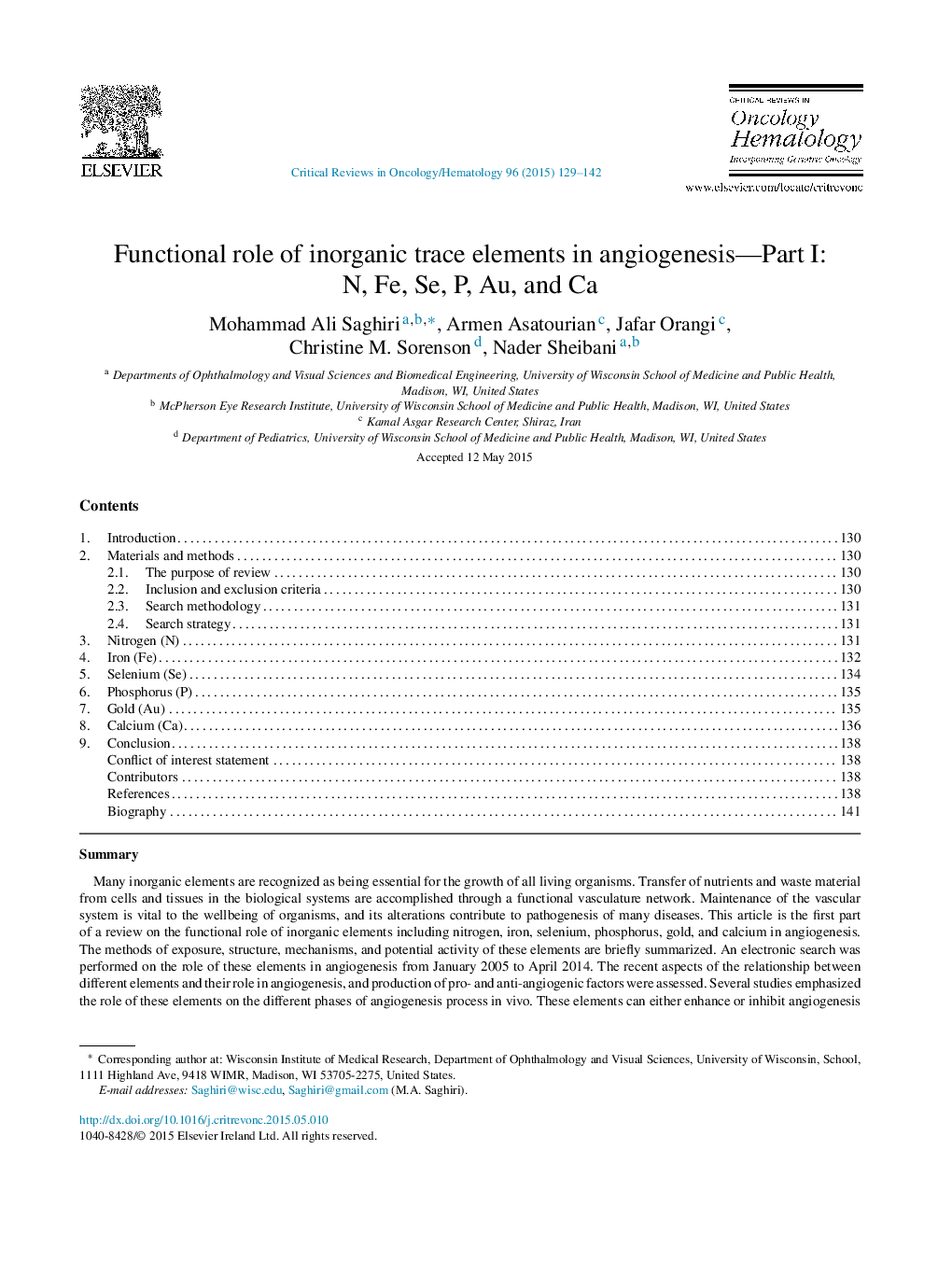| Article ID | Journal | Published Year | Pages | File Type |
|---|---|---|---|---|
| 3328643 | Critical Reviews in Oncology/Hematology | 2015 | 14 Pages |
SummaryMany inorganic elements are recognized as being essential for the growth of all living organisms. Transfer of nutrients and waste material from cells and tissues in the biological systems are accomplished through a functional vasculature network. Maintenance of the vascular system is vital to the wellbeing of organisms, and its alterations contribute to pathogenesis of many diseases. This article is the first part of a review on the functional role of inorganic elements including nitrogen, iron, selenium, phosphorus, gold, and calcium in angiogenesis. The methods of exposure, structure, mechanisms, and potential activity of these elements are briefly summarized. An electronic search was performed on the role of these elements in angiogenesis from January 2005 to April 2014. The recent aspects of the relationship between different elements and their role in angiogenesis, and production of pro- and anti-angiogenic factors were assessed. Several studies emphasized the role of these elements on the different phases of angiogenesis process in vivo. These elements can either enhance or inhibit angiogenesis events. Nitrogen in combination with bisphosphonates has antiangiogenic effects, while nitric oxide promotes the production of angiogenic growth factors. Iron deficiency can stimulate angiogenesis, but its excess suppresses angiogenesis events. Gold nanoparticles and selenium agents have therapeutic effects due to their anti-angiogenic characteristics, while phosphorus and calcium ions are regarded as pro-angiogenic elements. Understanding how these elements impact angiogenesis may provide new strategies for treatment of many diseases with neovascular component.
